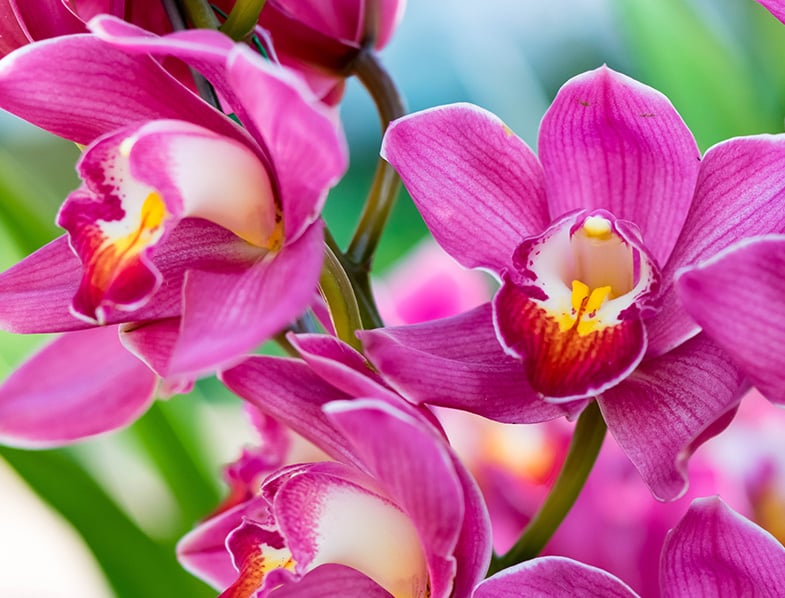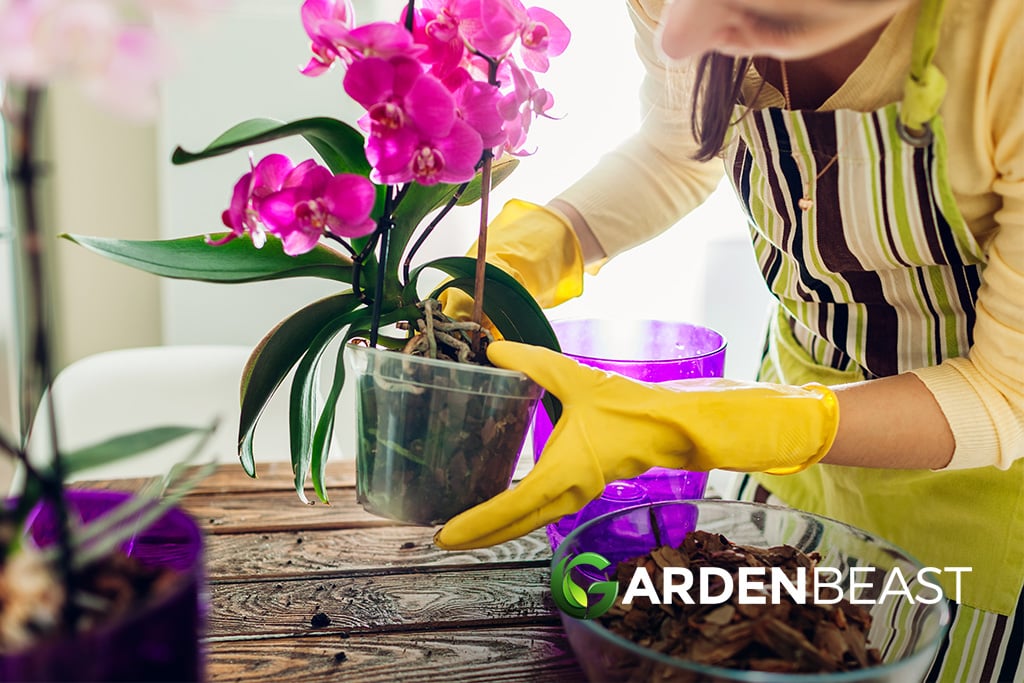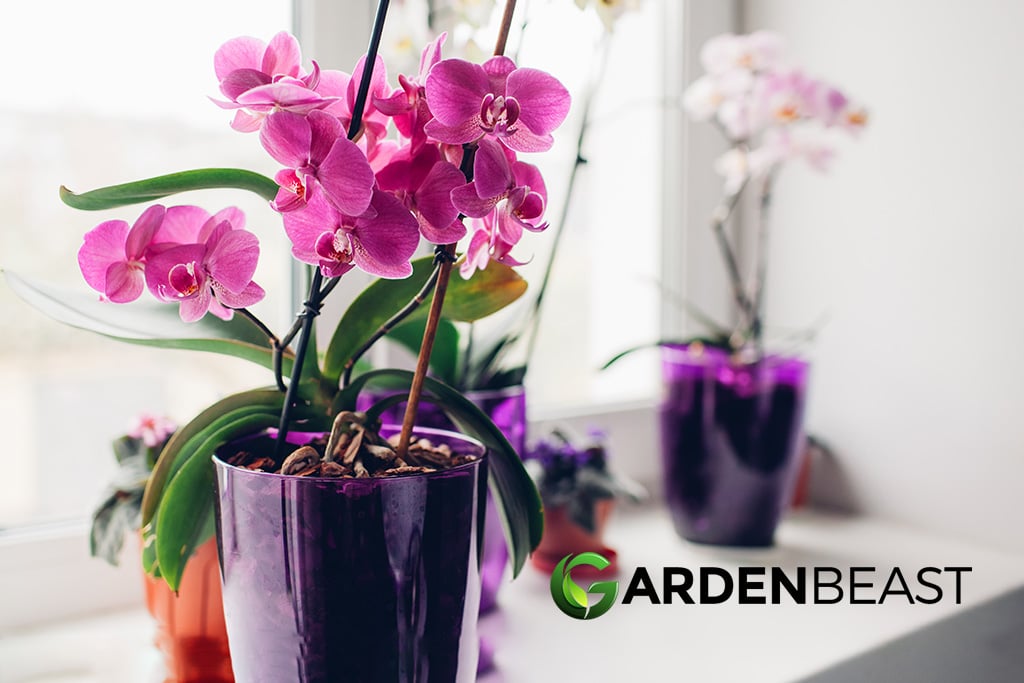In the early 2000s, the orchid was a rare flower to see in someone’s home or hothouse. The elegant beauty of the plant makes it a sought-after addition to any indoor garden or greenhouse.
Over the last 20-years, orchid breeders made the plant more accessible to hobbyist gardeners. Today, you can pick up orchids from plenty of dealers, even big-box retailers.
There are almost 25,000 varieties of orchids, with some selling for thousands of dollars, such as the “Paravanda,” named after former South African president Nelson Mandela.
Orchids currently outsell all other types of houseplants, even violets. The characteristic lip on the plant is a petal protruding from the tri-blossomed flower. The blossoms sometimes fuse with the sepals, and other times they remain independent.
Each orchid evolved to attract specific species of pollinators, resulting in the wide variety of species we find within the genus today.
Orchids come in two primary varieties; terrestrial (earth-growing) or epiphytic (air-growing). Most of the tropical varieties are the epiphytic type. When growing in the wild, these orchids cling to the branches and stumps of trees, drawing moisture from the surrounding environment to thrive.
This guide gives you everything you need to know about growing orchids at home.
Choosing Your Orchids
If you’re wandering through the gardening section of Walmart, you might come across orchids for sale, but is it a good purchase? Orchids from these retailers are every bit as good a buy as those from nurseries, offering you the same amazing flowers and lifespan as nursery-reared flowers.
The key is to choose a healthy-looking plant. However, your orchid will come in a plastic container packed with moss. That’s not ideal for raising the flower.
If you want your orchid to survive and thrive, you’re going to need to repot it as soon as you get home. Orchids need air circulating around the roots, or they drop their petals and start to wither away.

Potting Your Orchid
If the plant is already flowering, don’t repot it right away. You’ll need to wait for the orchid to shed its leaves. Repotting while the plant is flowering causes stress on the orchid, causing it to drop its leaves and enter dormancy.
After the orchid finishes flowering, snip the flower spike a few inches below the flowering head, using sharp scissors.
Remember to cut the stem at a 45-degree angle. Repot the plant in the early spring, and make sure you pot the plant tightly into the substrate. When you turn the pot upside down, the orchid should not fall to the floor.

Choosing Your Growing Medium for Orchids
Don’t plant your orchid in a standard potting mix. This mix reduces airflow around the roots. Orchids need air to survive, and the dense material in the potting mix limits airflow around the roots.
Choose a light, porous potting media, such as fine, medium, or coarse chunks of fir bark. You can add amendments like peat, perlite, horticultural charcoal, and sphagnum moss.
We like the specialized terracotta hanging pots for orchids as they come with slits on the pot’s side to enhance airflow to the roots. Using cloth material pots is also ideal for increasing airflow around the roots while providing optimal drainage for the soil.
Caring for Your Orchid
After selecting your pot and growing medium, it’s time to find your orchid a new home and care for it during the flowering season and dormancy period.
Orchid Lighting
Orchids will grow readily in low-light conditions, but the plants won’t produce any flowers, and that’s not ideal. Insufficient lighting is the number one cause of orchids failing to bloom and dropping flowers early.
Find your orchid a spot that has bright, indirect light. Leaving your orchid in the direct sunlight might burn the leaves and flowers. Placing the plant in a south or east-facing window is ideal for the orchid to thrive.
You can tell if your orchid enjoys the lighting conditions by the color of its leaves. In ideal growing conditions, the plant has luscious, bright green foliage. If the leaves turn dark, it’s a sign that the plant isn’t healthy and needs more light.
If the plant is getting too much light, the leaves feel warmer than the surrounding air temperature. If that’s the case, move it to a room with less direct sunlight.
Orchids and Air Circulation
Orchids require plenty of fresh air circulating around the roots. Leaving the plant next to an open window ensures it gets all the air it needs to thrive during the growing and flowering season.
The orchid likes gentle breezes blowing around the roots; with regular air movement, there’s less chance of disease developing on the roots or leaves. Without the necessary ventilation to the roots, the orchid will drop its flowers or fail to flower at all.
- Hardiness zone.6-9
- Grow.To grow orchids from seeds, you need a highly sterile environment and a source for orchid seeds. You'll also need to clean the seeds and a place to store them. Prepare an agar medium where you will sow the seeds. After germination, deflask and transfer the plants into pots.
- Color.Pink, purple, white, red, yellow, orange, green.
- Repot.After the orchid blooms fall off, you can repot your plant into a more suitable container with a light, porous growing medium and a pot that allows for good airflow
- Self-seeding.Grow from seed and enjoy growing with your family.
- Rare. Caleana major is a rare terrestrial orchid boasts of a unique flower that bears an uncanny resemblance to a flying duck in purple with red and brown tints.
- Blossom time. Its typical blooming season during fall to winter months or September until January.
- Sow. After seeds is sown in the flask, the flask is placed in a warm, well lit area where the seed will germinate in a few months to a few years, most species only taking a few months.
- Sun. They grow well under full or partial sunlight, with well-draining soil and water.
- Fun. Taking kids to grow this beautiful flower is not only fun but gives you the opportunity to teach them agriculture and science, too.
- 30 Pcs Mix Cymbidium Orchid Seeds
- Colorful and Elegant: The colors are bright and colorful, the flowers are neat and the texture is firm, and it will not wither for a long time. It is a luxurious and elegant orchid
- High Quality Seeds: There are 30 pcs fresh Cymbidium Orchid Seeds with large basket and mix colors, making your gardening beautiful and fun
- Easy to Plant and Grow: It likes high humidity and strong light, and the optimum temperature for growth is 10°C to 25°C. The night temperature should be around 10°C
- Ornamental Value: It is beautiful in shape and has high ornamental value. It can be planted alone, in columns or in clusters, and can be combined with other trees and shrubs to form a colorful four-season scene
Last update on 2024-10-08 / Affiliate links / Images from Amazon Product Advertising API
How to Water Orchids
Improper watering is the primary reason why orchids die early or refuse to flower. You’ll need to let the potting substrate dry out completely between watering. Overwatering the plant and failing to let the soil dry between watering leads to the development of root rot.
Root rot is a disease that quickly kills the plant. It prevents the roots from absorbing nutrients, reducing the orchids ability to absorb nutrition it needs to survive. It’s important not to make the mistake of watering your orchid using ice cubes.
Leaving ice cubes on top of the soil might seem like a smart way to slowly water the orchid. However, the chill from the ice will cause the plant to die. Think about being in a warm environment and someone dunking you in an ice bath – it’s pleasant at first, but you’ll catch hypothermia with extended exposure to the cold.
You can also tell if your orchid is thirsty by taking a look at the roots. If the roots look plump, then it’s a sign that your orchid is healthy. The roots will also have a bright green color. Thin, grey roots are a sign that the plant needs more water.
If the roots look brown and wilted, it’s a sign that the orchid has root rot. Stop watering and let the soil dry out entirely.
Orchids do well with watering with tepid tap water twice a week in summer and once a week in winter. Water until it starts draining the water from the bottom of the pot. This watering strategy also helps to remove salts from the soil, preventing the plant from becoming root-bound.
Fertilizing Your Orchids
You can fertilize your orchid every two weeks during the growing and flowering season. Fertilize once a month during the winter dormancy period.
In the growing season, you can use a 20-20-20 liquid fertilizer for the best results. We recommend using a 30-10-10 liquid fertilizer or some orchid food at half the recommended strength during the dormancy period.
Orchid Dormancy
Many people make the mistake of thinking that when the orchid drops its petals, and the last buds finish flowering, that the orchid is dead. As a result, they end up throwing it away. This approach is a mistake. Your orchid will continue to grow for years, provided you let it rest over the winter dormancy period.
Leave the plant in a dark, well-ventilated area, and reintroduce it to the growing area the following season. Typically, orchids rebloom every eight to 12 months.
What are the Pests and Diseases Affecting My Orchids?
Here are the common pests and diseases affecting orchids.
- Aphids – These pests leave sticky clear droplets on the plant.
- Scale – This disease appears on the underside of the leaves.
- Mealybugs – These pests leave a white, cotton-looking mass on the petals and the flower spike.
- Thrips – These pests are tiny, gnat-like creatures that have the appearance of long streaks on the leaves of the plant. Thrips will also disfigure the flower buds on the spike.
- Spider mites – These critters leave small spider-like webs on the plant’s foliage and the petals.
- Snails and Slugs – These pests aren’t common indoors and are only a concern if growing outdoors or in greenhouses.
If you notice signs of any of the above pests on your plants, we recommend using diluted Neem oil to drive them away.

It’s an effective natural pesticide and kinder on your plant than traditional chemical pesticides. Dilute it 50/50 with some distilled water, and spray it generously over the plant. Reapply every two or three days until the pest dies or leaves the plant.
Orchids typically don’t get many diseases, but there are a few that orchid growers need to look for during the spring and summer.
- Root rot – As mentioned, root rot will kill your orchid quickly, causing it to drop its petals and disfigure the flower buds.
- Crown rot – This disease appears in the center of the plant when the flower spike meets the leaves. It causes the center of the plant to turn black and rot. Avoid watering the center of the plant.
- Leaf Spot – Fungal and bacterial diseases leave yellow rings on the foliage of your plant.



